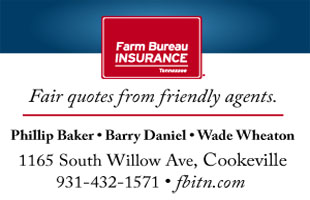In the wake of February’s ice storm, many have asked who is responsible for trees in the right of way?
Cookeville Right of Way Superintendent Jeff Fitzpatrick said the city is responsible for its 572 miles of overhead lines. However, Fitzpatrick said if any resident is still wondering who needs to do the trimming they should contact the city.
“If it is something that is a high voltage line along the street then it’s our responsibility that we do that,” Fitzpatrick said. “We definitely don’t want anybody taking it upon themselves to try to do that because there’s a lot of risk to it.”
Volunteer Energy Right of Way Superintendent Brad Rhea said they’re responsible for 20 feet on either side of their overhead lines. Rhea said as well that residents should reach out to Volunteer Energy and a professional will come and assess the hazard tree.
“Even if the limbs not touching you can still get an actual arc off that limb that can energize that tree,” Rhea said. “So we do not want anything that is near a power line, we don’t want a customer to touch it until we’ve come out there and looked at it and said yes or no if it’s okay for them to do that.”
Fitzpatrick said it is relatively easy for the city to determine if a line can be dropped for a home owner to trim.
“The line that comes into their house, it’s called a service drop and it drops from the transformer down to the electric service meter,” Fitzpatrick said. “That is how that they can distinguish that, but like I said, always err on the side of safety. If it’s something they’re not certain about, then they can give us a call.”
Rhea said they maintain 40 feet of right of way along overhead distribution lines. Rhea said they have a four to seven year trimming cycle, but work with property owners to preemptively address hazards.
“We can’t have eyes out everywhere at all times and we heavily rely on the public,” Rhea said. “To let us know if they see issues when they’re out and about. We encourage them to call in if they see anything that they think might be a potential hazard.”
Fitzpatrick said the city has a three year cycle and database for hazard calls and completed work. Fitzpatrick said no matter what time of line a resident might be concerned about, they can try and find who would be responsible for trimming.
“If we can contact the phone company or cable TV company and they’re very good about contacting us if people have a question,” Fitzpatrick said. “If we don’t then they may sometimes have to look up their provider’s information if it’s something we don’t have access to.”
Rhea said residents can also assist Volunteer Energy by keeping the easements clear. He said even shrubs or small flowering trees can impede the work of linemen trying to do maintenance.
 News Talk 94.1/AM 1600 Where The Upper Cumberland Talks
News Talk 94.1/AM 1600 Where The Upper Cumberland Talks







